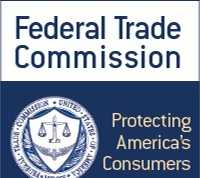Remarks by Secretary Paulson on Actions Taken and Actions Needed in U.S. Mortgage Markets at the Office of Thrift Supervision National Housing Forum
Washington, DC- December 3, 2007 -Thank you, John. The Office of Thrift Supervision plays an important role in our financial system, and I appreciate your leadership at this agency. Thanks, also, for hosting this second national housing forum and providing a timely opportunity for me to give an update on the U.S. economy and mortgage markets. I mention timeliness because housing issues are affecting citizens all across the country, and because Congress returns to Washington today. In the final days of this congressional session, there is much that Congress can do to help America’s homeowners. As we are all aware, the housing and mortgage markets are working through a period of turmoil, as are other credit markets, as risk is being reassessed and re-priced. We expect that this turbulence will take some time to work through, and we expect some penalty on our short-term economic growth. The positive news is that we are confronting and managing these challenges against the backdrop of a strong global economy. And the U.S. economy remains fundamentally sound ?core inflation is contained, continued job gains are providing a good foundation for household spending, corporate balance sheets remain healthy overall, and strong growth abroad is supporting U.S. exports. Our economy will continue to grow, but it is facing a number of challenges.
And as I have said before, the housing market downturn is the biggest challenge to our economy. When home foreclosures spike, the damage is not limited only to those who lose their homes. Homes in foreclosure can pose costs for whole neighborhoods, as crime goes up and property values decline.
Avoiding preventable foreclosures, then, is in the interest of all homeowners.
Mortgage market financial innovation has benefited the U.S. economy and U.S. homeowners; it has also introduced some of the challenges we face today. Financial innovation led to the creation of mortgage products that put homeownership within the reach of more people. At the same time, innovation also made riskier loans ?with no down payments or minimal documentation – more widely available. Similarly, securitization has brought benefits and challenges – making more capital available for mortgages, but creating greater market complexity. As a result, we now have an array of different market participants, often with different interests.
Still, foreclosure is expensive for all participants – lenders and investors ?and this expense is an incentive to avoid foreclosure when a homeowner has the financial wherewithal to own a home. An appropriate role for government is to bring the private sector together when innovation has greatly increased the complexity of achieving beneficial solutions for all parties involved. The number of subprime mortgage resets is going to increase dramatically next year, and we need to make sure the capacity is there to handle it.
And so, Treasury is aggressively pursuing a comprehensive plan to help as many able homeowners as possible keep their homes. We began by convening a diverse group of market participants, who represent all segments of the mortgage industry. Based on what we have learned, we are implementing a three point plan to avoid preventable foreclosures and to minimize the impact of the housing downturn on the U.S. economy.
First, we are increasing efforts to reach able homeowners who are struggling with their mortgages. Second, we are working to increase the availability of affordable mortgage solutions for these borrowers. Third, we are leading the industry to develop a systematic means of efficiently moving able homeowners into sustainable mortgages. This morning, I will provide more detail on the three elements of this plan, an update on the private sector’s efforts, the government’s efforts, and the additional steps that are needed in each area.
Increase Efforts to Reach Struggling HomeownersFirst, we must reach homeowners who are struggling, reach them early, and reach them with information and hope. The need for this effort became starkly clear when we learned that 50 percent of foreclosures occur without borrowers ever talking to their lender or a mortgage counselor. We knew that if we are to make a difference that number has to be reduced.
We learned that mortgage industry leaders had already stepped-up their efforts to reach delinquent borrowers, but many borrowers in trouble were afraid to speak to their lenders. Borrowers did respond more favorably to mortgage counselors, but the counselors didn’t know which borrowers most needed assistance. Treasury and HUD helped bring these two groups together in the HOPE NOW alliance ?a coalition of mortgage servicers, counselors and investors that are working to avoid preventable foreclosures and to improve the functioning of the mortgage markets.
Since its formation less than two months ago, the HOPE NOW alliance has made significant progress. In the past, some servicers may not have contacted borrowers until after their loans were delinquent. Today, all HOPE NOW servicers are contacting borrowers 120-days in advance of their mortgage reset, to reach them early, before their mortgage problem becomes overwhelming. For those troubled borrowers that servicers haven’t been able to reach, HOPE NOW has launched a nationwide letter campaign. These simple, one-page letters, on HOPE NOW letterhead, provide a toll-free hotline which homeowners can call to explore options with their servicer that may help them keep their home.
Mortgage investors recognize that foreclosure is costly and often not in their interest. And they recognize that quality mortgage counseling can help prevent foreclosures. By bringing together counselors, servicers and investors, the HOPE NOW alliance has brought the resources of investors to bear to enable non-profit mortgage counselors to be more widely available. The Alliance is scaling up a national hotline that borrowers can call for mortgage counseling. And let me say to those listening out there ?if you are worried about losing your home, call this number, 1-888-995-HOPE, to see if you are eligible for assistance. This hotline is available 24-hours a day to provide vital mortgage counseling in multiple languages. Nothing is worse than doing nothing.
The HOPE NOW effort to streamline refinancings and modifications is a positive step, but it is not a silver bullet. There is no single solution to address all of the issues currently affecting the housing and mortgage markets.
The government has a role to play, as well. First, we need to draw attention to these letters and urge borrowers who receive them to act on them. Secretary Jackson and I have been doing just that, recently we sent copies of these letters to all Members of Congress so they can alert their constituents. We are asking governors and mayors to do the same. We will also join HOPE NOW’s efforts to broaden its public service announcement campaign, to spread the word that hope is but a phone call away.
While increased industry funding is very important, we also need to do our part to support non-profit mortgage counseling organizations. For this public outreach campaign to be successful there must be enough trained mortgage counselors to answer the phone when homeowners call. The Administration requested funding for NeighborWorks America and other non-profit mortgage counseling operations in its budget. But the appropriations bill has yet to be finalized; Congress needs to get it done quickly.
Increase Availability of Affordable Mortgage SolutionsOf course, reaching homeowners is only part of the equation. The second part of our action plan is to make more mortgage products available for borrowers who have the financial wherewithal to own a home, but are struggling with the higher adjusted rate on their subprime mortgages. To help with this, the industry is looking at several innovative solutions ?including both modifications and refinancings. State and local governments, especially in the hardest hit areas, are also developing solutions, including proposing funds that may help financially-able borrowers refinance out of expensive subprime loans.
Given the local nature of housing markets, state and local solutions can be particularly effective. Current law allows states and localities to issue tax-exempt bonds only to assist first time homebuyers or homebuyers in designated distressed areas. Some states’ housing agencies have initiated pilot programs, backed by taxable bonds, to help refinance struggling subprime borrowers into more affordable mortgages.
Today, we are proposing to allow state and local governments to temporarily broaden their tax-exempt bond programs to include mortgage refinancings; if enacted, this will reduce the cost of innovative mortgage programs and allow these programs to reach more struggling homeowners.
We in the federal government are also taking steps. This fall, HUD initiated “FHASecure” to give the FHA the flexibility to help more families stay in their homes, even those who have good credit but may not have made all of their mortgage payments on time. An estimated 240,000 families can avoid foreclosure by refinancing their mortgages under the FHASecure plan.
The Administration is taking action to help homeowners, and Congress must do the same before it leaves for the year. Since August, the President has been calling on Congress to pass his FHA modernization proposal which, by lowering the down payment requirement, increasing the loan limit and allowing risk-based pricing, will make affordable FHA loans more widely available. The Administration’s proposed bill would help refinance another estimated 200,000 families into FHA-insured loans.
Since August, the President has also called on Congress to provide tax relief for mortgage debt forgiven; homeowners who finally find relief shouldn’t get put back in financial straits because of the tax code. Additionally, Congress needs to complete its work and create a strong, independent regulator for Fannie Mae and Freddie Mac. Fannie Mae and Freddie Mac have an important role to play in making mortgages available and affordable, and appropriate regulatory oversight is critical to their ability to serve their public policy purpose.
Develop a Systematic Solution for Transition into Affordable MortgagesThe third element of our plan involves a pragmatic response to the reality that the number of homeowners struggling with their resetting subprime mortgage will increase throughout 2008. As volume increases, we will need an aggressive, systematic approach to fast-track able borrowers into a refinance or mortgage modification. This third element does not, and will not, include spending taxpayer money on funding or subsidies for industry participants or homeowners.
While the reality is a bit more complex, in the interest of simplicity, there are four categories of subprime borrowers. There are those who can afford their adjusted interest rate; these homeowners need no assistance. There are also a substantial number of homeowners who haven’t been making payments at the starter rate on their subprime loan and may not have the financial wherewithal to sustain home ownership; some of these homeowners will become renters again. A third category of homeowners might choose to refinance their mortgage – putting them in a sustainable mortgage while keeping investors whole. This is the first, best option. Servicers should move quickly to assist those who can refinance.
And the fourth category is those with steady incomes and relatively clean payment histories who could afford the lower introductory mortgage rate but cannot afford the higher adjusted rate. We are focusing on this group, determining who they are and what steps may appropriately assist them.
However, given the diffuse nature of today’s mortgage market, the steps toward refinancing and modification can be more difficult than it would seem.
The company collecting your mortgage payment every month is most often doing that on behalf of those who own the mortgage, and they are limited in the decisions they can make on behalf of those ultimate owners, who are spread all over the world.
We are determined to bring this diverse group together, to develop a set of standards that will be implemented across the industry, from the largest mortgage servicers to the smaller specialty servicers. An industry-wide approach is critical to the effectiveness of this effort.
To speed up the modification process, Treasury is working through the HOPE NOW alliance with the American Securitization Forum to convene servicers and investors so they can develop categories of borrowers eligible for appropriate modifications and refinancings, and an industry-wide solution. This work takes time, as all parties seek to define categories of borrowers for streamlined refinance and modification where that is in the best interest of both the borrower and the mortgage investor. I am confident they will finalize these standards soon. And I expect all servicers will implement them quickly, and create benchmarks to measure their progress along the way. As a result, what was a fragmented, cumbersome process can be a coordinated effort which more quickly helps able homeowners.
Through continued, dedicated efforts by industry, non-profit organizations and the government, we can strike the necessary balance to mitigate the risk to our economy of the housing downturn. The issues are complex, and will take time. We are working aggressively and quickly, utilizing available tools and creating new ones, to help financially responsible but struggling homeowners. This, in turn, helps their neighbors, by preventing foreclosures and sales which can drive down property values and undermine the financial stability of families and communities; it also helps investors and lenders avoid unnecessary and costly foreclosures that are not in their interest.
We will continue these efforts, measuring progress and making adjustments when necessary, to ensure as many able homeowners as possible are reached and helped. The Administration and the private sector are taking action. Congress now needs to also act ?to appropriate funds for mortgage counseling, to pass FHA modernization and GSE oversight legislation, to pass legislation to temporarily relieve tax liability for mortgage debt forgiven, and legislation to temporarily increase capacity and allow state and local governments new flexibility to use tax-exempt bonds for home mortgage refinancings. The U.S. economy and America’s communities deserve no less.














